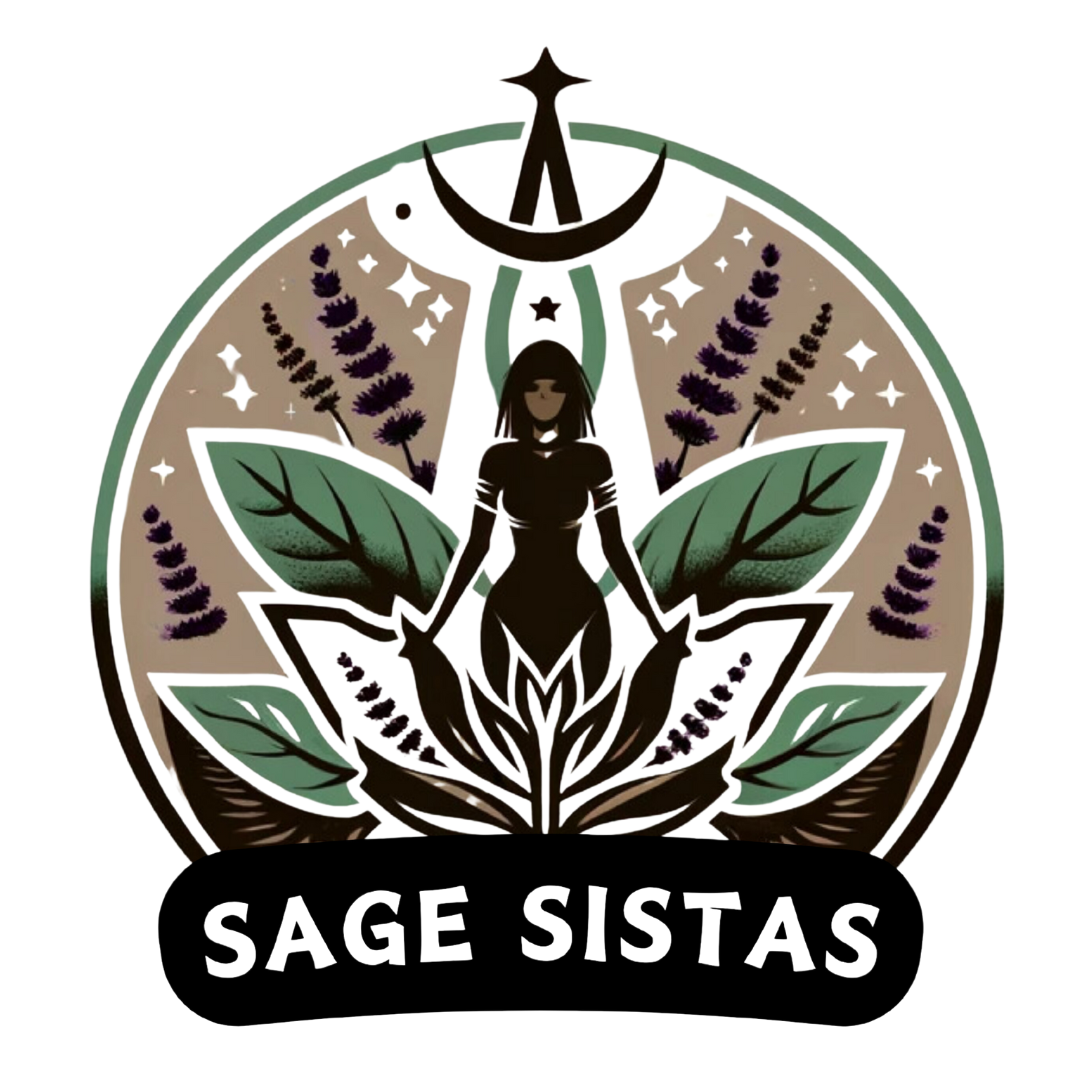Tarot And Kabbalah: A Comprehensive Beginner's Guide

You have the power to unlock the mysteries of your life’s path thanks to the ancient wisdom of Tarot and Kabbalah!
Contrary to the common belief today, these timeless practices offer more than just foresight. They are ancient tools for self-growth and provide us with deep insights into life.
You can gain a clearer understanding of yourself and the universe around you by learning about the rich symbolism of Tarot cards and the spiritual structure of Kabbalah.
So, if you are curious about Tarot and Kabbalah, grab yourself a cup of tea because we have a lot to talk about like how these two ancient practices connect and underlie the modern spiritual practices.
Table of Contents
Part 1: Introduction To Tarot
1.1. History of Tarot
1.2. What Is The Major Arcana?
1.3. Tarot Cards and Their Meanings
1.4. What Is The Minor Arcana?
1.5. Numerology And Symbolism In Tarot
Part 2: Introduction To Kabbalah
2.1. What Is The Tree Of Life?
2.2. What Is The Sephirot (Spheres)?
Part 3: The Connection Between Tarot And Kabbalah
3.1. How Tarot Cards Align With The Tree Of Life
3.2. Connection Between The Major Arcana And The Paths Between The Sephirot
3.3. Mapping The Minor Arcana Onto The Four Worlds Of Kabbalah
Part 4: Modern Practices Of Tarot And Kabbalah
4.1. Using Tarot And Kabbalah In Daily Life
4.2. Tips For Integrating Tarot And Kabbalah Into Your Regular Spiritual Practice
Final Words
FAQs About Tarot And Kabbalah
Part 1: Introduction To Tarot
1.1. History of Tarot
Tarot cards first appeared in the mid-15th century, not as mystical tools, but as playing cards for the European elite. Originally used for games similar to modern bridges, these cards were beautifully decorated and featured intricate artwork that reflected the societal and cultural contexts of the time.
As tarot traveled across continents and cultures, its purpose and interpretation evolved significantly.
By the 18th century, tarot had transformed into a tool for divination. This shift was influenced by the rise of occultism in Europe, where tarot was embraced as a method for uncovering hidden truths and gaining insights into the self and the future.
Mystics and occultists reimagined the tarot deck, infusing it with astrological, kabbalistic, and alchemical symbolism. This evolution marked the beginning of tarot's use in spiritual introspection and self-discovery.
Today, tarot is widely recognized not just for fortune-telling but as a profound tool for psychological insight and personal development, offering a mirror to one's subconscious and pathways to deeper understanding. Each card serves as a chapter in the human experience, illustrating the trials, tribulations, and triumphs that forge the soul’s journey.
1.2. What Is The Major Arcana?
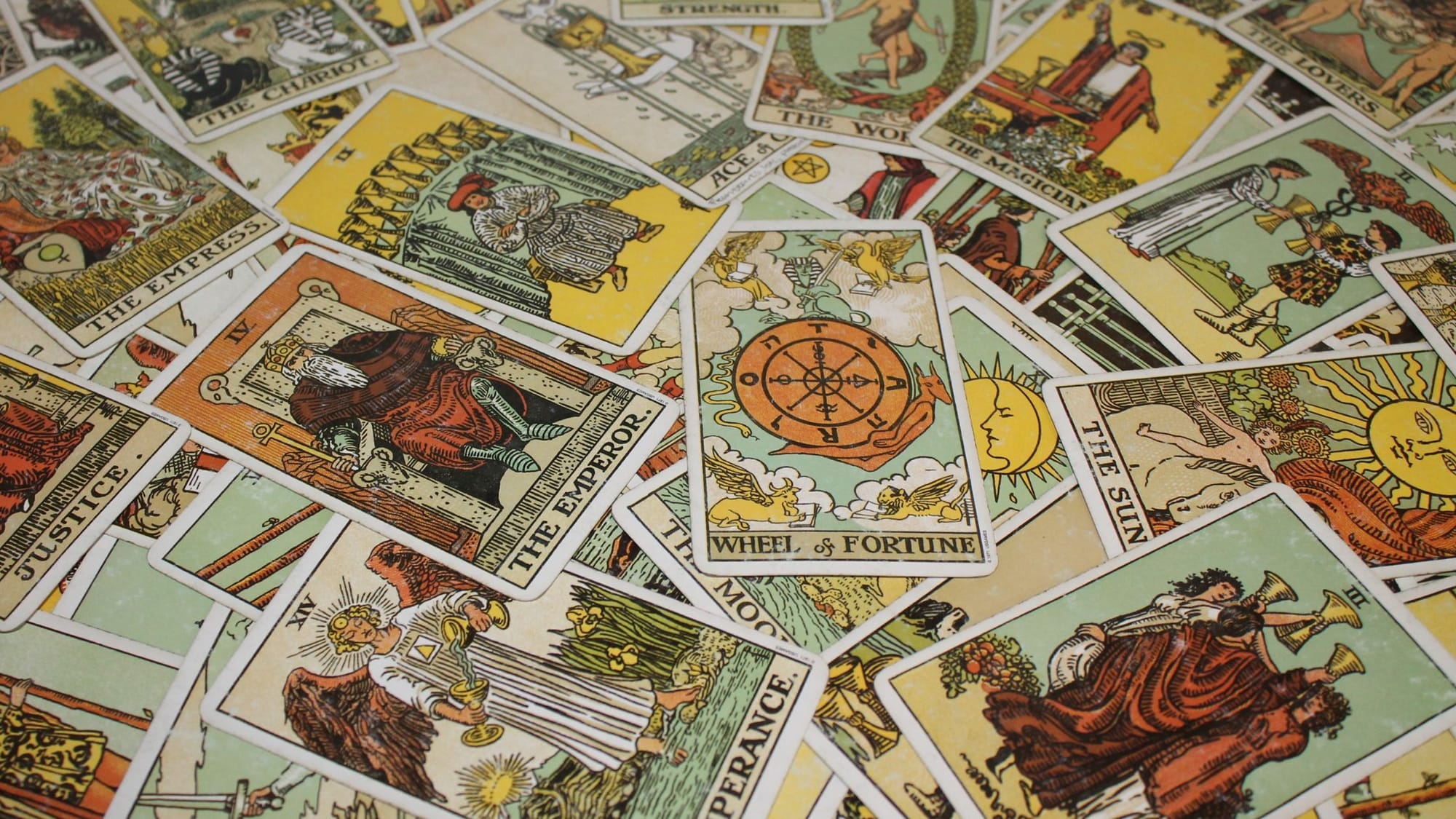
The Major Arcana is a set of 22 cards in a Tarot deck, each featuring symbolic illustrations and themes representing various archetypal aspects of the soul's journey.
Unlike the Minor Arcana (we'll come back to that later below), which is divided into four suits and deals with everyday matters, the Major Arcana cards address larger themes that speak to life-changing events, deep psychological states, and pivotal personal insights.
Here are some key points about the Major Arcana you should know:
- Archetypal Themes: Each card in the Major Arcana embodies a specific archetype or universally recognized model of life experiences, such as The Fool symbolizing beginnings and innocence, or The Tower representing sudden upheaval and change.
- Spiritual Journey: The sequence of the Major Arcana can be seen as depicting the journey of the soul from ignorance to enlightenment, or the path of human consciousness evolving from innocence through various stages of insight and challenge to ultimate wisdom.
- Numerology and Symbolism: The cards are numbered from 0 to 21, with each number adding additional layers of symbolic meaning to the cards. This numerology is often considered in readings to deepen the understanding of the card’s position in the journey of the Major Arcana.
- Use in Divination: In tarot readings, the appearance of Major Arcana cards is generally seen as significant, indicating major influences or events in a person's life. These cards are thought to carry more weight and offer powerful insights into the spiritual forces, life lessons, or personal growth challenges.
- Universal Aspects of Experience: The themes in the Major Arcana are universal, touching on shared human experiences such as ambition, challenge, sacrifice, and rebirth. They provide guidance, provoke thought, and encourage introspection about one's life path and choices.
Read Also:

1.3. Tarot Cards and Their Meanings
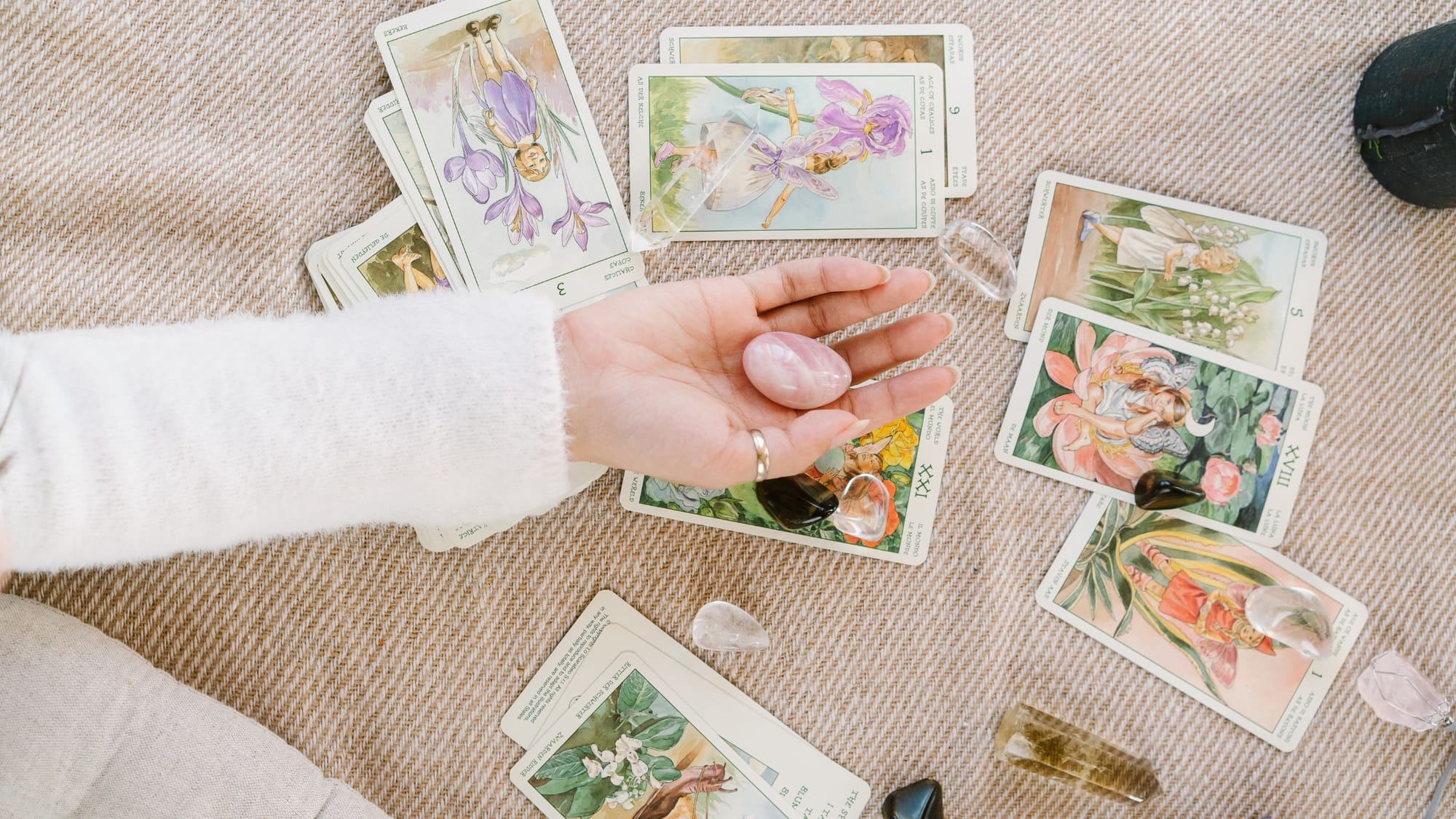
Below, you can see the 22 cards of the tarot deck and their meanings:
- The Fool (0): The Fool is the spirit in search of experience. It represents new beginnings, having faith in the future, and taking a leap into the unknown with optimism and innocence. The Fool is often depicted stepping off a cliff, signifying the boundless possibilities of the unknown.
- The Magician (I): The Magician represents the manifestation of one's desires through direct action. This card is about resourcefulness and power; the Magician uses the tools at his disposal (symbolized by the elements on his table: the cup, pentacle, sword, and wand) to manage his environment effectively.
- The High Priestess (II): This card symbolizes mystery, intuition, and knowledge that is not immediately obvious but lies beneath the surface. The High Priestess sits in front of a thin veil decorated with pomegranates, symbolic of fertility and the subconscious mind. She urges us to look beyond the obvious and tap into our inner wisdom.
- The Empress (III): The Empress embodies the mother figure, representing abundance, nurturing, and fertility. She is associated with the beauty of nature, sensuality, and material abundance. This card suggests a time of growth, physical comfort, and emotional well-being.
- The Emperor (IV): Representing stability and authority, The Emperor signifies control, leadership, and rational thinking. He often appears as a stern figure, seated upon a throne, emphasizing structure and order in life or a situation.
- The Hierophant (V): The Hierophant represents traditional values and is seen as a spiritual mentor or guide. He symbolizes the need to conform to established social structures and norms, representing education, religious guidance, and adherence to traditional moral and ethical principles.
- The Lovers (VI): Typically interpreted as a card of love and relationships, The Lovers can also represent a choice to be made with the heart. This card embodies the concepts of union, duality, and choices; it is not just about a romantic tie but also about the ideological and ethical choices we face.
- The Chariot (VII): This card symbolizes conquest, control, and willpower. The Charioteer uses determination and will to triumph over obstacles. It often suggests a journey or a quest where the querent needs to assert themselves forcefully to succeed.
- Strength (VIII): Not merely physical strength but inner strength, the card depicts a woman calmly opening a lion’s mouth. It suggests mastering raw emotions to achieve goals through patience and determination, representing courage, persuasion, and influence.
- The Hermit (IX): The Hermit stands for solitude, searching, and inner reflection. Often shown carrying a lantern in a dark place, this card suggests a period of introspection where one seeks deeper truths alone.
- Wheel of Fortune (X): This card represents the cyclical nature of life, destiny, and significant turning points. The Wheel of Fortune reminds us that change is the only constant and that the wheel will always turn to reveal new opportunities or challenges.
- Justice (XI): Justice deals with the idea of karma and the law of cause and effect, asserting that all actions have consequences. It symbolizes balance, fairness, and truth, and often calls for a need to weigh decisions carefully or rectify a situation to achieve balance.
- The Hanged Man (XII): The Hanged Man suggests a period of suspension and sacrifice. Representing self-imposed limitation and letting go, this card can symbolize a time of voluntary surrender, introspection, and looking at things from a new perspective.
- Death (XIII): Often feared, the Death card primarily symbolizes transformation and deep change, endings that make room for new beginnings. It is a sign of closure and conclusion in one area to allow for new growth.
- Temperance (XIV): This card signifies balance, moderation, and purpose, particularly in spiritual matters. Temperance calls for a harmonious blend of opposites and can suggest a time of self-evaluation to reassess one’s path.
- The Devil (XV): Representing bondage, the Devil is about being overly bound to the material world or to unhealthy, unproductive behaviors or obsessions. It reminds us that we are trapped only by our own materialistic and hedonistic inclinations.
- The Tower (XVI): The Tower is a card of upheaval and unexpected change. Like a bolt of lightning, this card can represent a sudden revelation or the crumbling of longstanding structures.
- The Star (XVII): After the storm, The Star provides calm and clarity. It represents hope, healing, and the rejuvenation that follows a time of trouble, offering spiritual tranquility and renewed optimism.
- The Moon (XVIII): The Moon is about the world of the unconscious, the night, and illusions. It warns of confusion and sometimes deception, suggesting that things are not always as they appear and that reality may be distorted by fears and anxieties.
- The Sun (XIX): The Sun is one of the most positive cards in the deck, representing success, radiance, and abundance. The Sun gives strength and tells you that no matter where you go or what you do, your positive and radiant energy will follow you and bring joy.
- Judgment (XX): Judgment calls for a period of reflection and self-evaluation. Through this, you can find absolution and rebirth, and awaken to new possibilities.
- The World (XXI): The World represents completion, achievement, and fulfillment. All the efforts you have put in have come full circle, and you can now reap the benefits of your hard work.
Read Also:
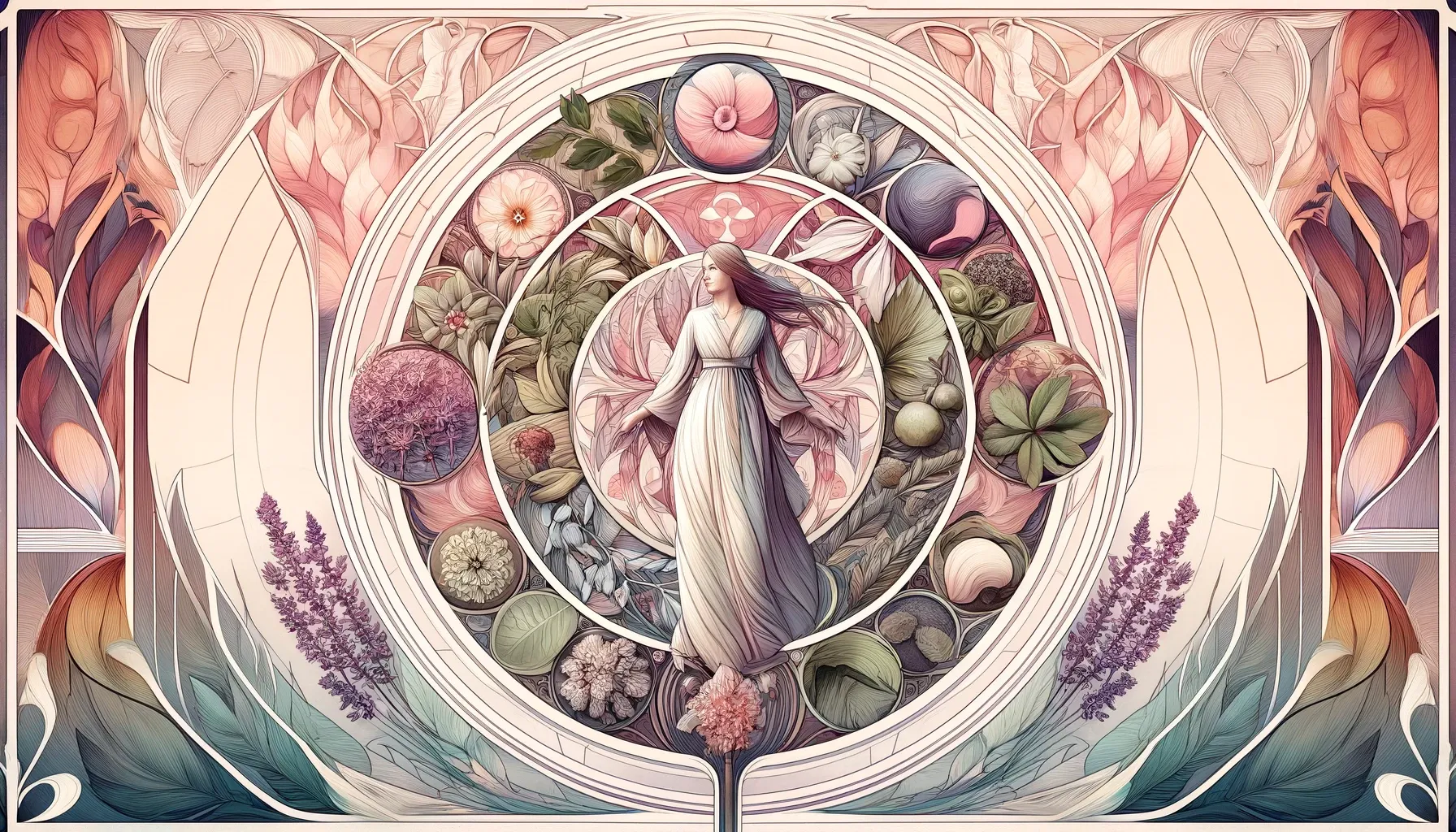
1.4. What Is The Minor Arcana?
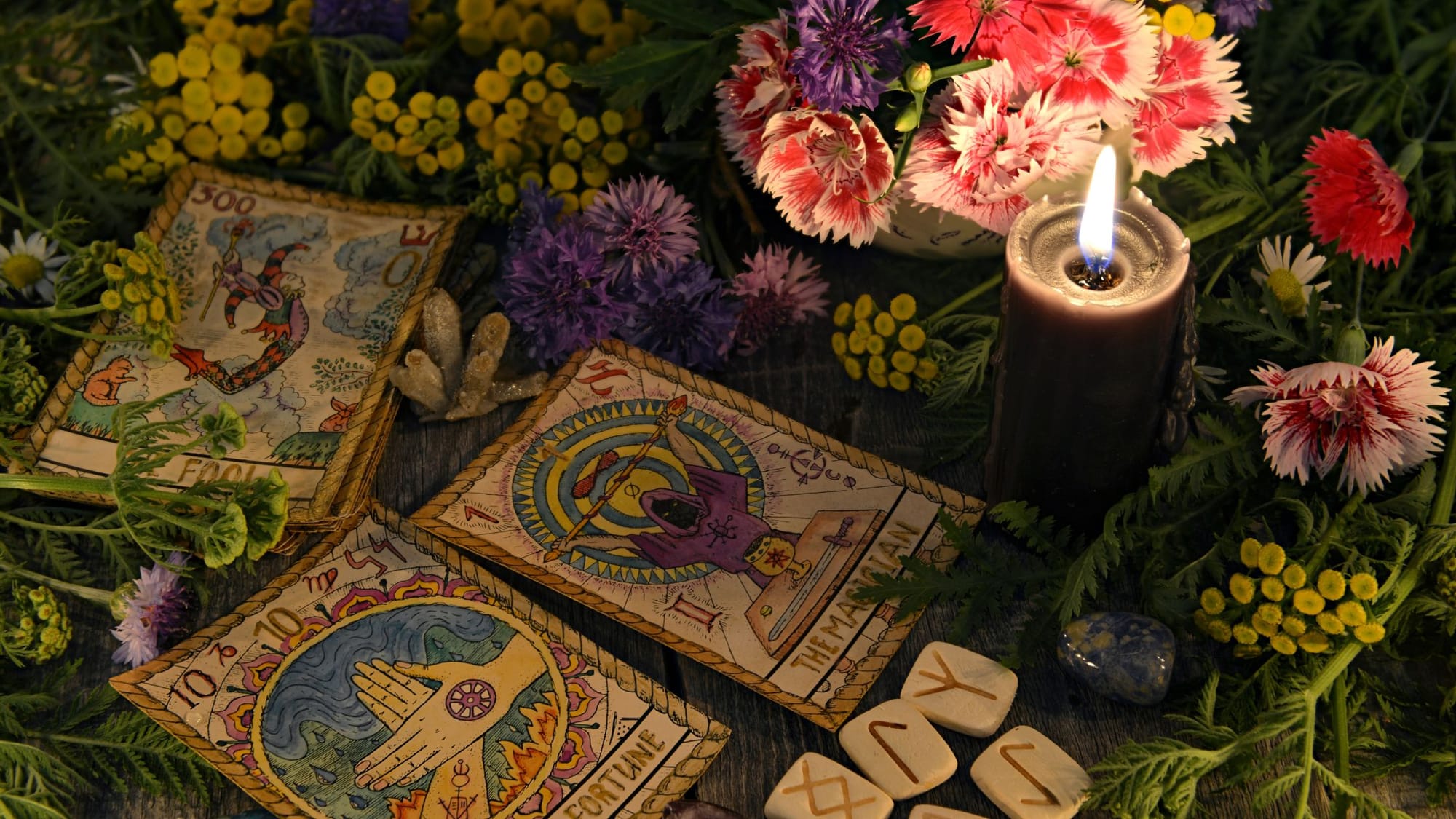
The Minor Arcana in a Tarot deck complements the Major Arcana by adding detail and context to the broader themes and life lessons depicted by the Major cards. Comprising 56 cards, the Minor Arcana is divided into four suits, each associated with one of the four classical elements and specific aspects of human experience:
- Swords (Element of Air): This suit is associated with the mental realm, intellect, decisions, action, and conflict. Swords often deal with challenges, struggles, and the power of thought and communication in navigating through life's difficulties.
- Wands (Element of Fire): Wands represent creativity, ambition, growth, and passion. They are linked to our ambitions, personal growth, and the energy that drives us to pursue our goals. Wands are often associated with career, inspiration, and personal projects.
- Cups (Element of Water): The suit of Cups deals with emotions, relationships, and connections. It reflects our feelings, the quality of our relationships, and our interactions with others and ourselves. Cups are often tied to love, friendship, and emotional bonds.
- Pentacles (Element of Earth): This suit focuses on material aspects, such as wealth, work, and physical health. Pentacles address the practical and grounded elements of life, including financial security, practical endeavors, and the tangible achievements of our labor.
Each suit of the Minor Arcana includes ten numbered cards and four court cards, which bring human characteristics into the interpretations:
- Page: Pages typically represent young, energetic, but inexperienced aspects of their suit. They are messengers and learners. They often symbolize new beginnings or the early stages of development.
- Knight: Knights are action-oriented and reflect the dynamism and movement associated with their suits. They can represent young adults or individuals who are pursuing their passions with zeal and determination.
- Queen: Queens embody maturity, nurturing, and the reflective qualities of their suit. They are figures of authority and experience, offering insight and support. They often represent the growth and mastery of the emotional and relational aspects of their suit.
- King: Kings are the culmination of the suit’s journey, representing mastery, control, and leadership. They are decision-makers, ones who have authority and expertise in the realm represented by their suit.
Together, the Minor Arcana and Court Cards offer a nuanced and detailed map of daily life, reflecting everything from big life events to mundane day-to-day occurrences.
They help fill in the details and personal dimensions of a Tarot reading, providing depth and personal relevance to the archetypal themes presented by the Major Arcana. These cards are essential for understanding the complexities of personal interactions and the subtleties of individual growth and challenges.
Read Also:
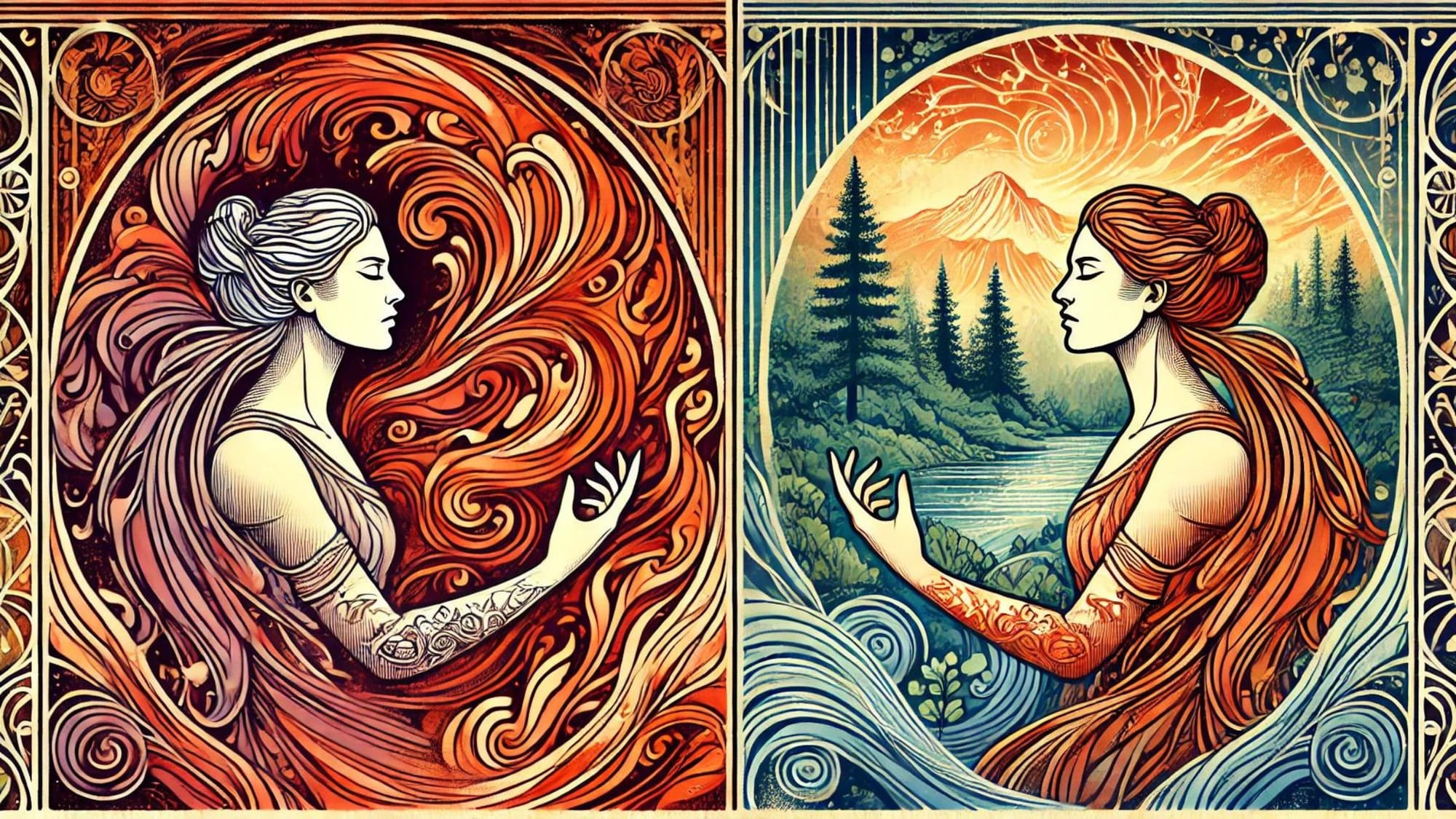
1.5 Numerology And Symbolism In Tarot
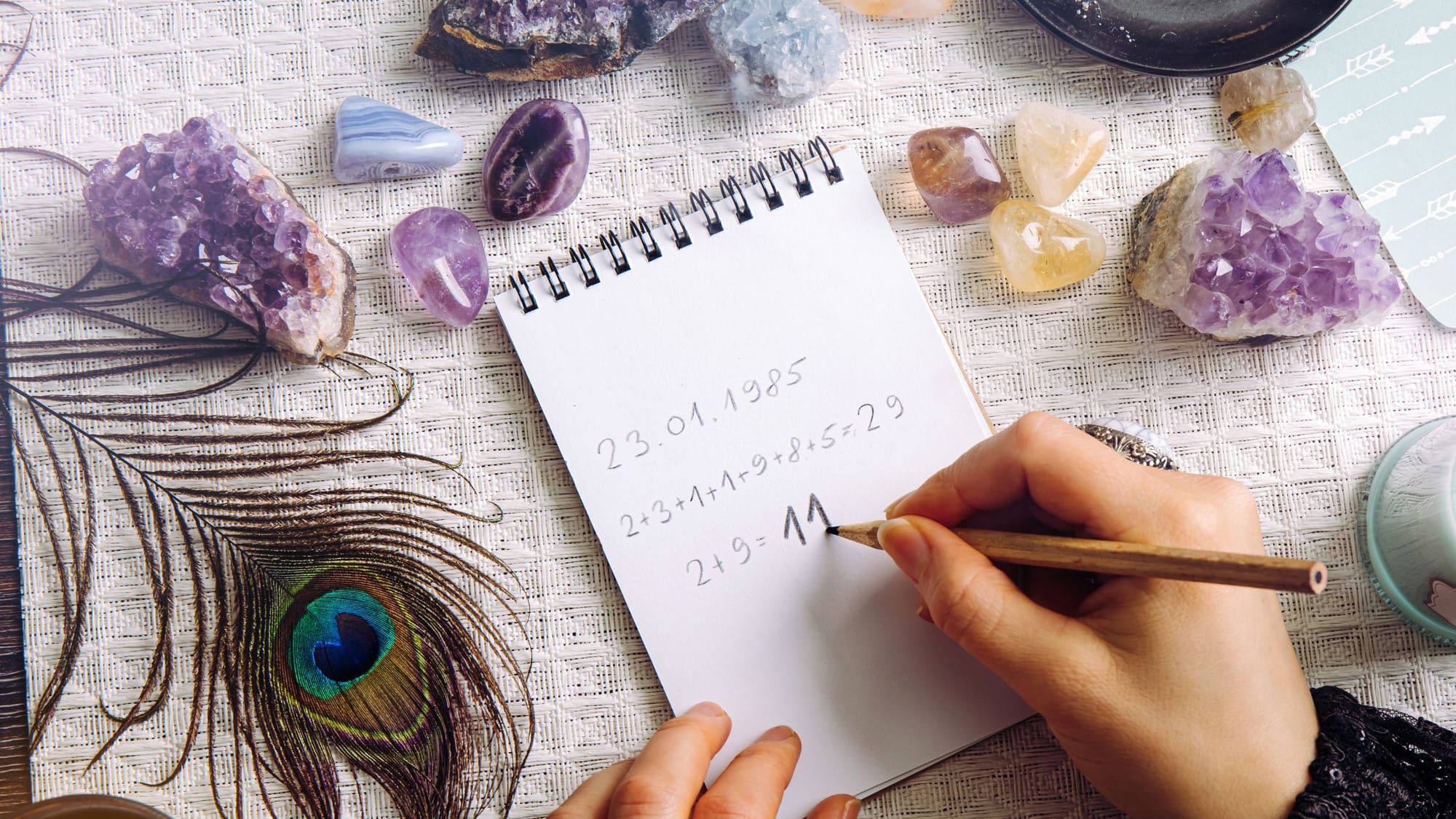
Numerology and symbolism play significant roles in the interpretation of Tarot cards, adding layers of meaning that enrich the insights provided by each card in a reading.
Numerology In Tarot
Each number on the Tarot cards carries archetypal significance that resonates across the Minor Arcana and also influences the Major Arcana. Numbers reflect universal themes and stages in cycles of growth, decay, and transformation.
One to Ten: In the Minor Arcana, numbers one through ten help narrate the progression of the suit’s theme from beginning (ace) to completion (ten):
- Ace (1): New beginnings, pure potential, or a new opportunity.
- Two: Duality, balance, partnership, or decision.
- Three: Development, growth, first results, or collaboration.
- Four: Stability, structure, stagnation, or foundation.
- Five: Conflict, loss, adversity, or a catalyst for change.
- Six: Communication, cooperation, and exchange.
- Seven: Reflection, assessment, or spiritual challenge.
- Eight: Movement, action, change of status, or power.
- Nine: Fulfillment, completion, or attainment.
- Ten: Completion of a cycle, ultimate outcome, or culmination of efforts.
Master Numbers: Certain cards in the Major Arcana, like The Wheel of Fortune (10 = 1+0 = 1) and The World (21 = 2+1 = 3), also carry numerological significance which ties back to the themes of new beginnings or the completion of an important cycle.
Symbolism In Tarot
Each Tarot card is rich with symbols, each chosen to convey specific ideas and concepts related to spiritual and personal growth.
- Colors: Each color used in the imagery of Tarot cards has meaning. For example, red may denote passion, energy, or aggression, while blue may symbolize calm, intuition, and mental clarity.
- Nature Elements: Images of rivers, mountains, and skies carry meanings related to the flow of life, obstacles, and the overall expanse of the journey.
- Animals and Plants: Specific animals and plants can symbolize various intangible qualities. Lions might represent courage and authority; roses could denote passion or secrecy.
- Cultural and Historical Symbols: Many cards include cultural or historical symbols that carry deep meanings, such as the ankh, the cross, or mythological figures.
- Position and Gesture: The way figures are positioned or what they are doing also holds meaning, such as a figure looking forward to representing the future or hands open as a sign of acceptance.
Read Also:
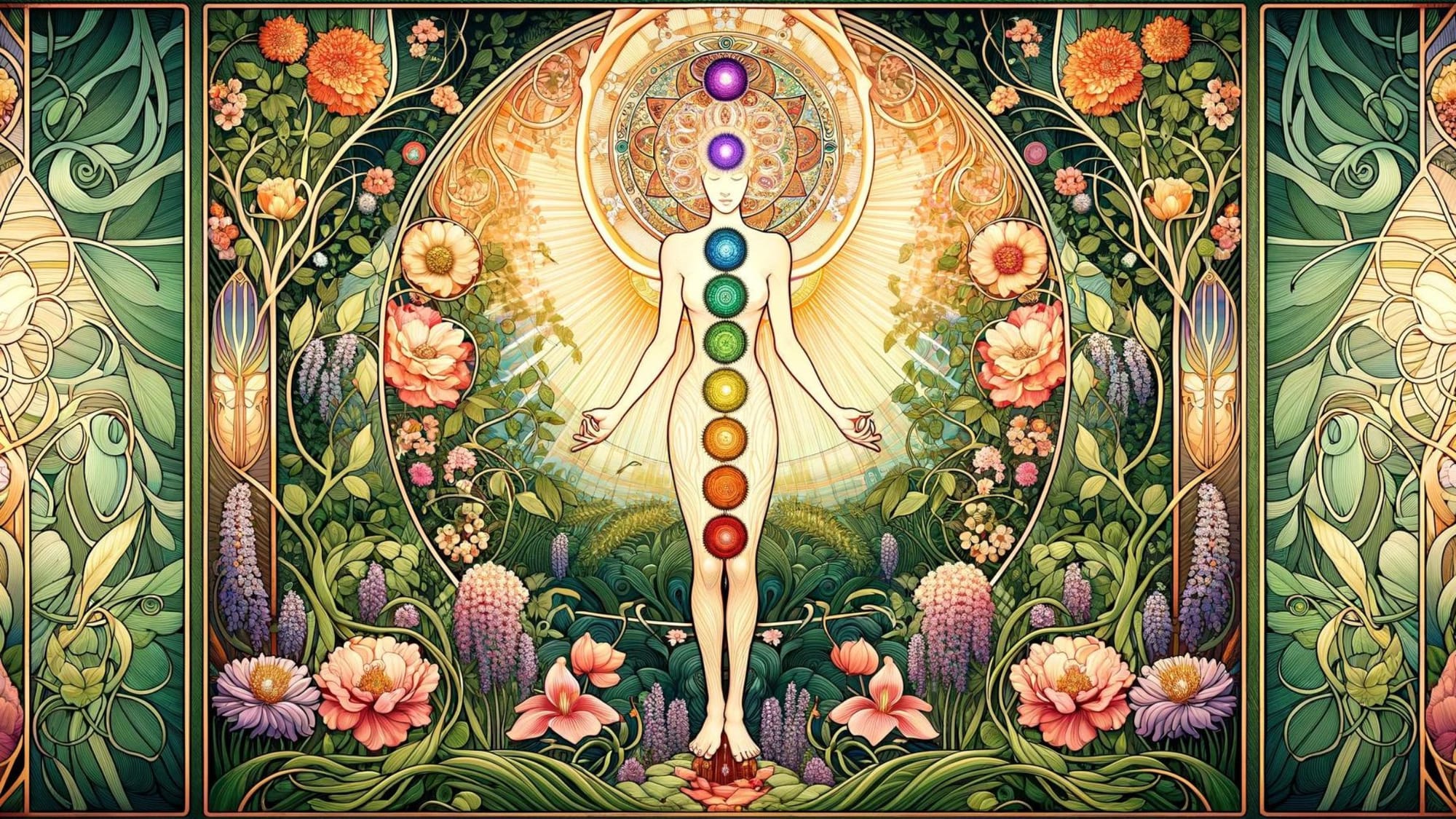
Part 2: Introduction To Kabbalah
Kabbalah, a profound and ancient form of Jewish mysticism, explores the nature of God, the universe, and the soul. Central to its teachings is the Tree of Life, a complex structure of ten interconnected spheres or sephirot that map out the path to spiritual enlightenment and the divine nature of existence.
2.1. What Is The Tree Of Life?
The Tree of Life is depicted as a diagrammatic representation consisting of ten sephirot connected by twenty-two paths. Each sephirah represents an attribute of God through which the Ein Sof (the Infinite) reveals His will and essence.
It is often viewed as a blueprint of creation, with each sephirah symbolizing a stage in the process through which the universe and all beings came into existence.
For practitioners of Kabbalah, the Tree of Life also serves as a roadmap for the spiritual ascent, guiding the soul through stages of self-awareness and closer communion with the divine.
2.2. What Is The Sephirot (Spheres)?
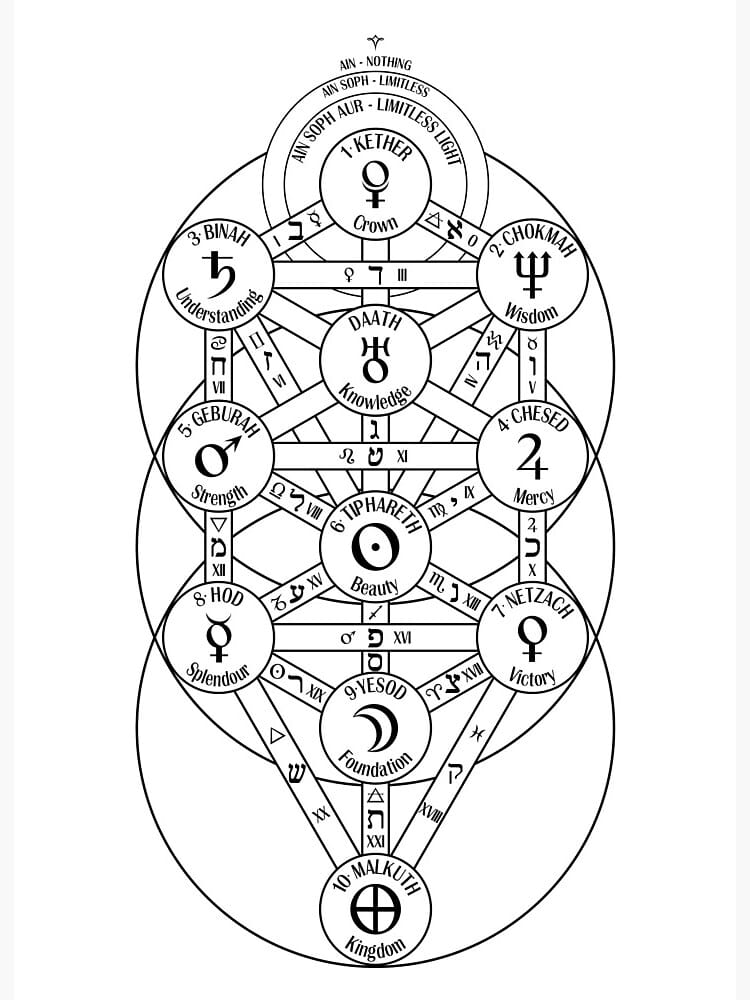
Each of the ten sephirot on the Tree of Life has a unique metaphysical meaning and contributes to the overall understanding of God’s attributes:
- Keter (Crown): Representing the divine will or pure consciousness, Keter is the topmost sephirah, which connects directly with the Ein Sof, or the infinite.
- Chokhmah (Wisdom): The spark of intuitive knowledge that comes directly from the divine, often considered the force that brings new things into being.
- Binah (Understanding): The receptive principle that balances Chokhmah, Binah is about contemplation and the intellectual capacity that forms the archetype of creation.
- Chesed (Mercy or Kindness): This sephirah represents love, kindness, and openness, expressing God’s unconditional generosity and benevolence.
- Gevurah (Severity or Judgment): Gevurah is the principle of justice and discipline, providing necessary boundaries that balance Chesed.
- Tiferet (Beauty): The sphere of symmetry and truth, Tiferet harmonizes Chesed and Gevurah. It represents spiritual balance and compassion.
- Netzach (Victory): This sephirah symbolizes endurance, the tenacity of the human spirit, and the ability to overcome obstacles.
- Hod (Splendor): Reflecting the majesty of absolute adherence to truth, Hod counters Netzach with withdrawal and surrender.
- Yesod (Foundation): Yesod acts as a transmitter between the upper sephirot and Malchut, channeling divine energies into reality.
- Malkuth (Kingdom): The final sephirah, Malkuth represents the physical world as we experience it, the culmination of divine flow into the manifest realm.
Part 3: The Connection Between Tarot And Kabbalah
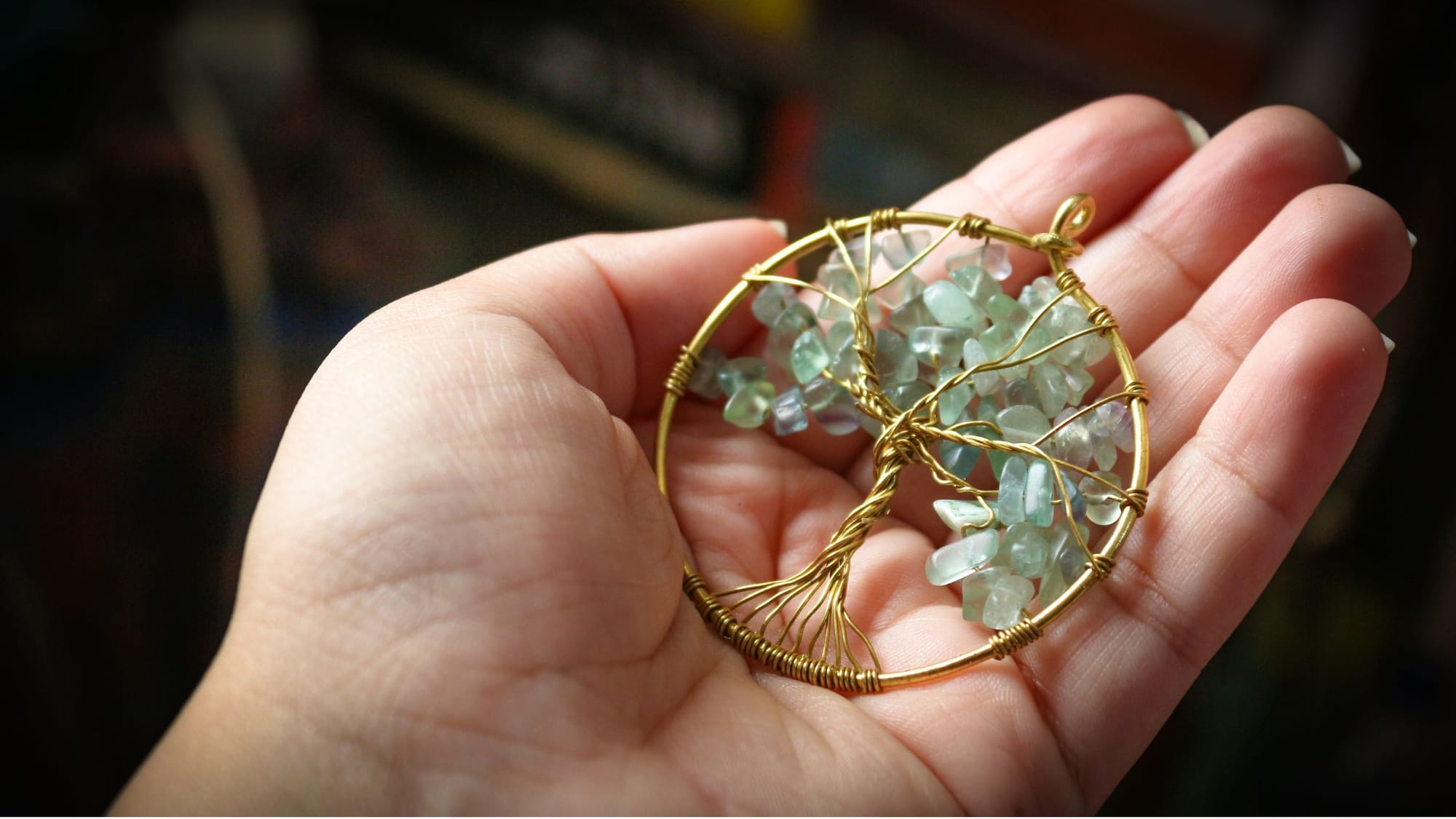
Tarot and Kabbalah intersect deeply, with the structure of the Tarot deck aligning closely with Kabbalistic concepts, particularly the Tree of Life. This alignment allows for a rich, layered interpretation of the cards, infusing them with profound spiritual significance.
3.1. How Tarot Cards Align With The Tree Of Life
Major Arcana and the Sephirot: Each of the Major Arcana cards corresponds to one of the paths connecting the sephirot on the Tree of Life. The 22 paths represent spiritual tests or lessons that are part of the soul’s journey towards enlightenment, paralleling the journey depicted in the Major Arcana from The Fool to The World.
The Fool’s Journey: The Fool's journey through the Major Arcana can be seen as a journey through the paths of the Tree of Life, starting from Keter (the crown) and moving down to Malkuth (the kingdom). Each card and path reflects a specific type of spiritual insight or challenge.
3.2. Connection Between The Major Arcana And The Paths Between The Sephirot
Specific Alignments: For example, The Magician, represented as the first card (I), is associated with the path between Keter and Binah, symbolizing the manifestation of divine will into understanding. Similarly, The High Priestess (II) connects Keter and Chokhmah, reflecting the passage from infinite potential to actual wisdom.
Symbolic Pathways: Each pathway and corresponding card highlight aspects of the spiritual and material worlds, and their interplay, revealing deeper insights into life’s complex tapestry.
3.3. Mapping The Minor Arcana Onto The Four Worlds Of Kabbalah
- Atziluth (World of Emanation): Corresponds with the suit of Wands, representing the archetypal world of fire, initiative, and spirituality. This world is associated with the creative force and divine spark.
- Beriah (World of Creation): Linked to the suit of Cups, reflecting the emotional and intellectual manifestation of creation, akin to the world of water where ideas begin to take shape.
- Yetzirah (World of Formation): Corresponds with the suit of Swords, representing the formative world of air where plans and thoughts are detailed and analyzed.
- Assiah (World of Action): Linked to the suit of Pentacles, representing the final materialization in the earthly realm, akin to the world of Earth where ideas and efforts manifest physically.
- 78 Degrees of Wisdom by Rachel Pollack
- Kabbalah for the Modern World by Migene González-Wippler
Part 4: Modern Practices Of Tarot And Kabbalah
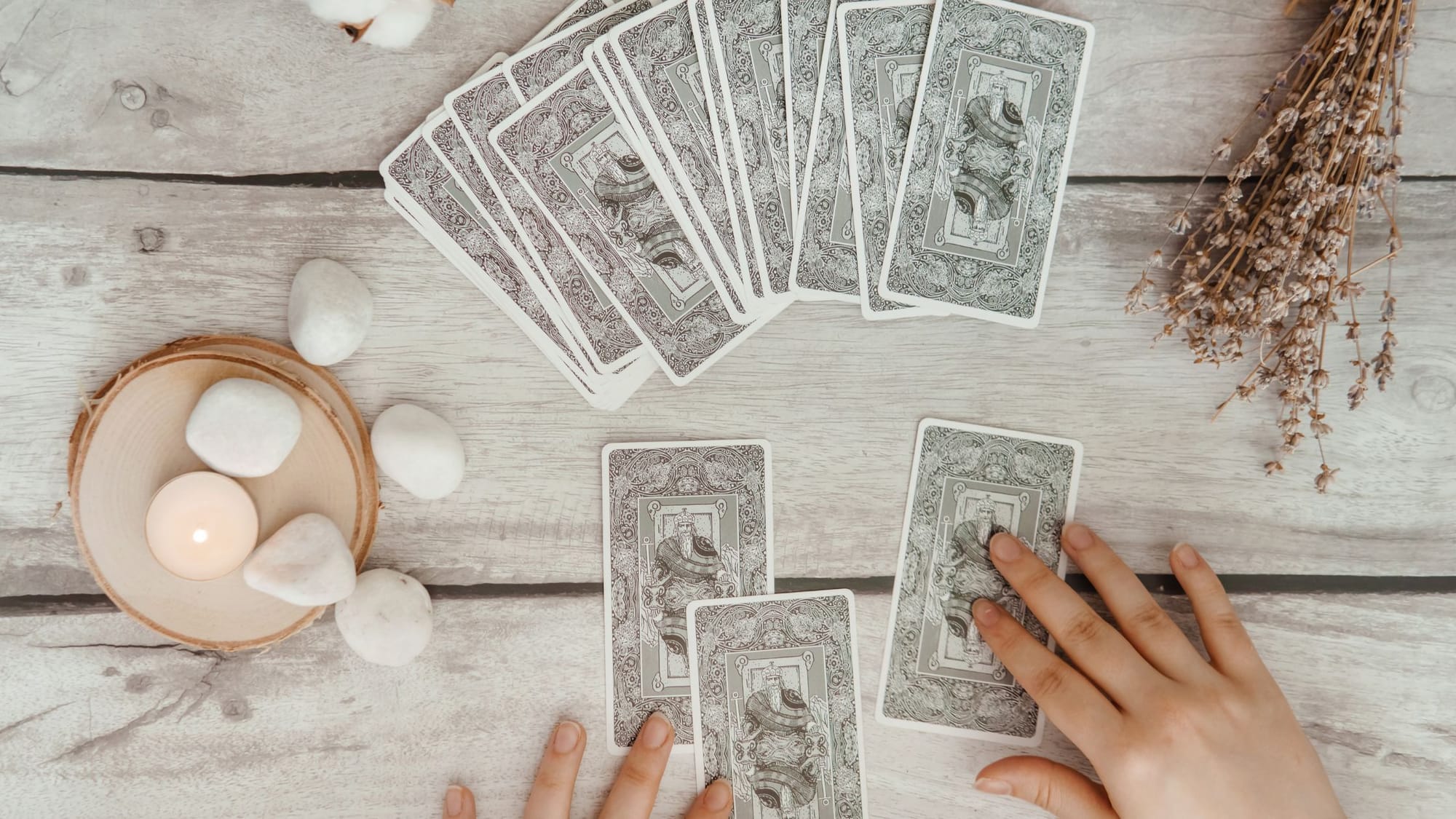
Both Tarot and Kabbalah offer deep spiritual insights and practical guidance that can be applied to daily life, aiding in decision-making, personal development, and spiritual growth. Here's how these ancient tools can be integrated into daily practices and used to enhance self-awareness and life decisions.
4.1. Using Tarot And Kabbalah In Daily Life
Clarifying Life Choices:
- Tarot Readings: Use Tarot cards to gain clarity on specific decisions. For instance, if contemplating a career change, a Tarot spread can help reveal the underlying dynamics of your current job, potential challenges in making a change, and the possible outcomes of different choices.
- Kabbalistic Pathways: Reflect on the specific sephiroth and paths of the Kabbalistic Tree of Life that correspond to your life situation. For example, if you need courage to make a difficult decision, meditate on the qualities of Gevurah, which represents strength and discipline.
Exploring Relationships:
- Relationship Spreads: Use Tarot to explore the dynamics within personal relationships. Cards can highlight areas of strength, tension, potential growth, and emotional fulfillment.
- Tree of Life Reflections: Consider how your relationships align with the sephirotic qualities, such as Chesed for loving-kindness or Tiferet for balance and beauty, to foster deeper connections and understanding.
Self Reflection:
- Card of the Day: Draw a daily Tarot card to reflect on the day’s potential challenges and opportunities. This practice helps you align your actions with the broader spiritual lessons reflected in the cards.
- Sephirot of the Day: Focus on a different sephirah each day to imbibe and manifest its qualities in your life, promoting a balanced approach to spiritual and personal challenges.
Meditative Practices:
- Symbolic Contemplation: Meditate on the symbolism of a specific Tarot card or a path on the Tree of Life. This can provide deep insights into subconscious thoughts and help resolve inner conflicts.
- Guided Visualizations: Use the structure of the Tree of Life for guided meditations, visualizing yourself climbing the tree or traversing the paths to achieve greater spiritual awareness and personal insight.
4.2. Tips For Integrating Tarot And Kabbalah Into Your Regular Spiritual Practice
- Create a Dedicated Space: Establish a quiet and comfortable space for your readings and meditations. This helps in setting the right mood and intention, making your practice more effective.
- Keep a Journal: Document your Tarot readings and Kabbalistic meditations. Writing down your insights and reflections can help track spiritual growth and patterns in your life, enhancing self-awareness and understanding.
- Study and Learn: Continuously learn about the deeper meanings of the Tarot cards and the sephirot. This ongoing study will enrich your understanding and make your practice more meaningful.
- Integrate with Other Practices: Combine your Tarot and Kabbalah practices with other spiritual or mindfulness practices like yoga or journaling. This can enhance your overall spiritual routine and provide more holistic benefits.
- Community Engagement: Join online forums or local groups that focus on Tarot and Kabbalah. Engaging with a community can provide support, diverse perspectives, and deeper insights into your practice.
Final Words
The journey through the landscapes of Tarot and Kabbalah offers a profound pathway to understanding not just the cosmos, but also the inner workings of our own personal and spiritual dynamics. These ancient practices provide historical context and actionable insights that can significantly enhance our daily lives through self-discovery, reflection, and decision-making.
Read Also:
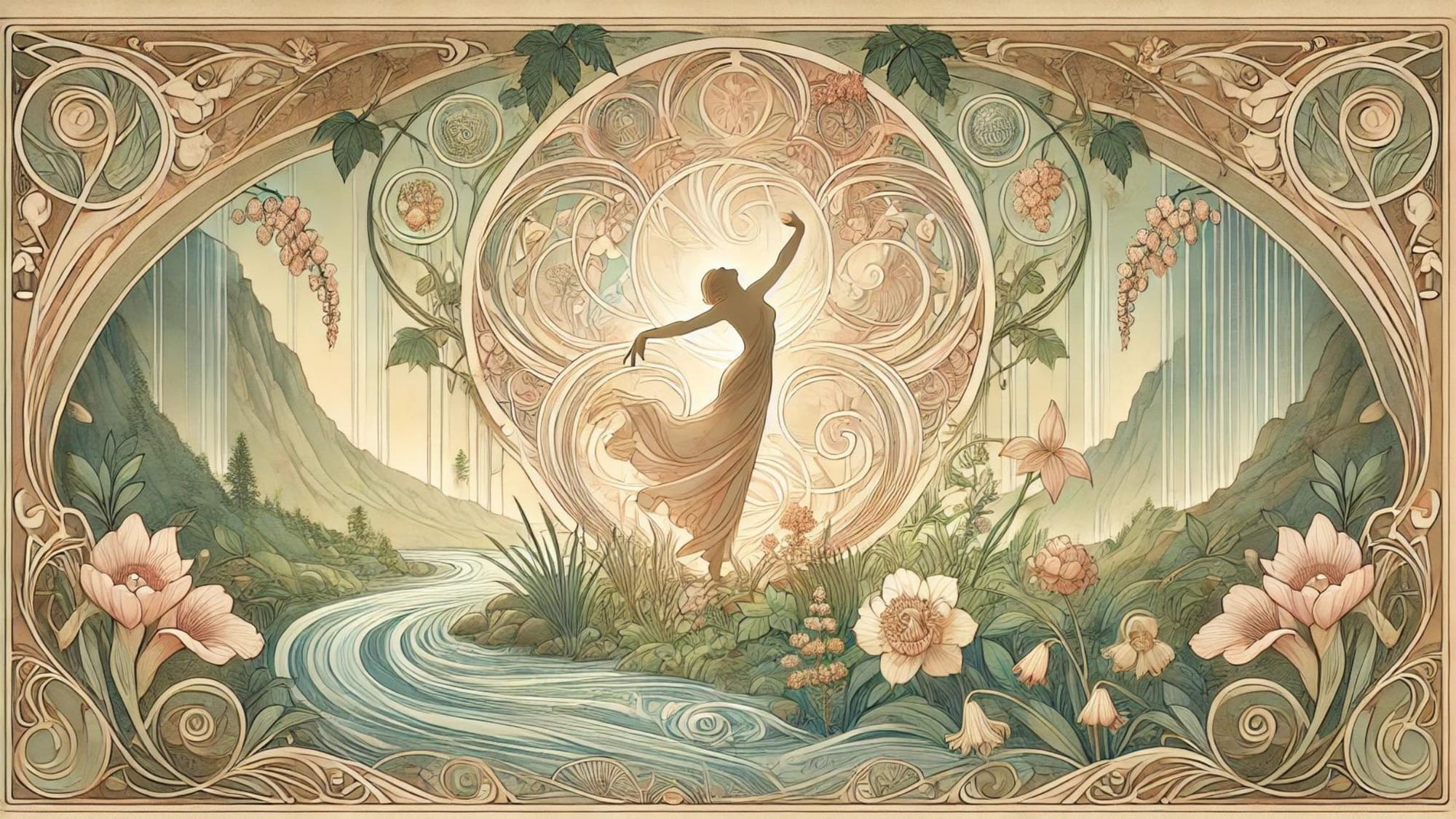
Frequently Asked Questions About Tarot And Kabbalah
1. What religion do tarot cards come from?
Tarot cards do not originate from any one religion. They began as playing cards in the 15th century in parts of Europe and were later adopted by various mystical and esoteric traditions, including some that incorporate elements of Christian, Jewish, and other spiritual symbolism.
2. What culture invented tarot?
Tarot cards were invented in Europe, initially appearing in the mid-15th century in Italy. They were part of a European trend of playing card games and are believed to have been influenced by earlier Islamic card games.
3. Is tarot a form of mysticism?
Yes, tarot can be considered a form of mysticism, especially in how it is used today. It involves using cards to gain insight into the past, present, or future by posing questions and interpreting the cards' imagery and symbols, which many believe taps into the subconscious or the divine.
4. What are Kabbalah's main beliefs?
Kabbalah is a mystical and esoteric interpretation of Jewish theology and cosmology. Its main beliefs include the idea that the universe is structured through ten divine attributes or emanations called sephirot, which represent different aspects of God's creation and influence. Kabbalah teaches that understanding these sephirot and their interconnections can help individuals connect more deeply with the divine and enhance their spiritual awareness.
Become a Sista and follow us on Instagram, subscribe to our YouTube channel, and tune into our podcasts on Spotify!
